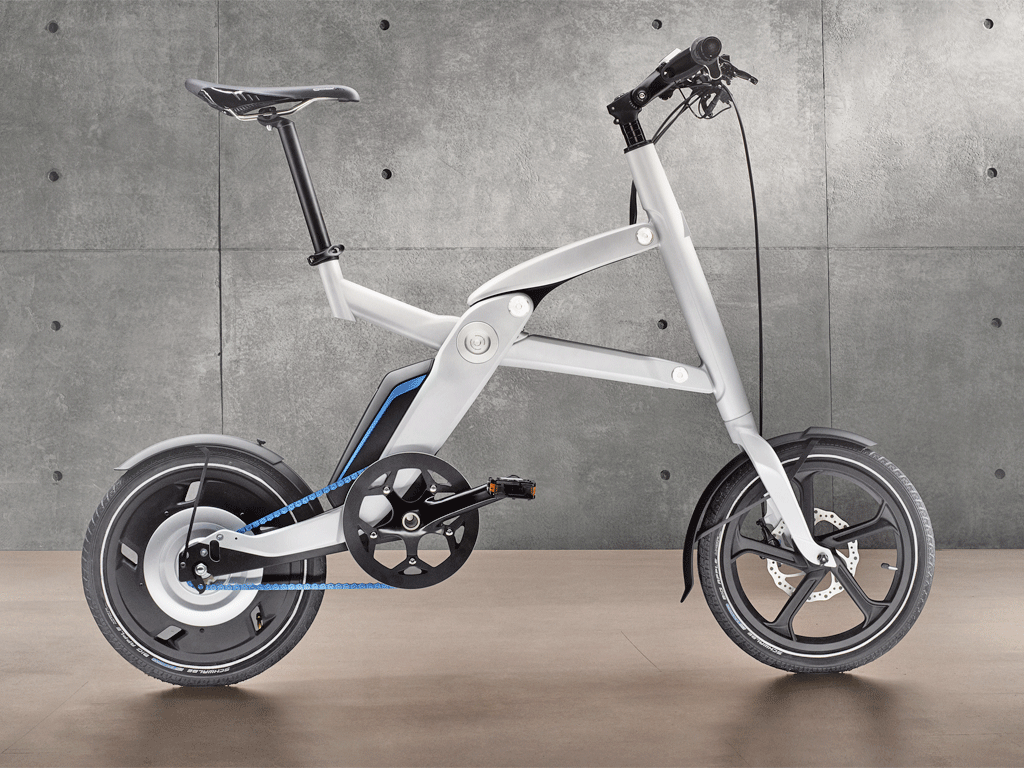Wheels etc: BMW i Pedelec Concept
Park, ride, then slip a disc carrying it up the stairs

Wheelbase: 1,080mm
Weight: 20kg
Gears: Three, with 42V hub motor
Price: TBC
When I think of power-assisted bicycles, I imagine one of those vintage, mud-flecked, lawnmower-like pedal-mopeds. Riding it, I see some Provençal farm labourer, sputtering along a lavender-lined country road, Gauloise cigarette dangling from his lips, with a bag of shopping, or a small dog, in a vegetable crate fixed haphazardly to the back with bungees.
The BMW i Pedelec Concept is the German version of that vision: sleek and foldable, a pedal-electric hybrid (hence "Pedelec") with a 50/50 aluminium/carbon-fibre frame. It has a three-speed gear hub integrated with its electric motor, and hydraulic disc braking. It has nowhere to put a small dog.
BMW, a major Olympic sponsor, has issued some Pedelec prototypes to athletes during the Games; the firm had one left over to lend to me. The bike is part of a range of forthcoming electric and hybrid vehicles from the German manufacturer's sustainability-focused "sub-brand", BMW i. It's intended, not for the French countryside, but for the city: you can fit two into the boot of the BMW i3 EV hybrid car, which is due on the market at the end of 2013. The idea, BMW suggests, is to drive into London or Paris or Munich, and then complete the last couple of miles of your commute by bike: park and ride, as it were.
As mobility gadgets go, the Pedelec is a lot less silly than the Segway or the Sinclair C5, but it ought to appeal to a similar market of well-off geeks. The gearshift and brakes are both configured like a regular bicycle; the electric bit is controlled from a handlebar-mounted LCD panel. I switched it on, pressed a couple of buttons, and my pedalling generated an extra motorised kick, effortlessly accelerating to a top speed of 16 miles per hour (25kmh). If you can pedal faster than that on 16-inch wheels, go ahead, but the motor's speed limit means it's still classed as a bicycle: it needn't be registered or insured, and riders aren't obliged to wear helmets. Besides, 16mph is more than enough for a speedy getaway at traffic lights. And on hills, I barely broke a sweat.
The Pedelec's lithium-manganese battery pack is meant to last between 16 and 25 miles after a four-hour charge (from the i3's built-in charger, or a domestic plug socket). I'd used up about two-thirds of the juice after 23.5 miles, so it would probably go a bit further than the specs suggest. Supposedly, you can replenish the battery by increments if you press the right buttons and pedal on the downhills, but it feels like wasted effort: the effect on the charge is imperceptible.
If the battery were to run out on an uphill stretch, meanwhile, you could be in trouble. BMW claims the Pedelec's frame is extra-light – and it is, for a moped. But it's heavier than any bicycle I've ever ridden. Too heavy for anyone with back problems to heft in and out of a car boot, for example. The Pedelec is still a prototype, and yet to carry a price tag, though if it does go on sale it will probably be for four figures.
I had fun whizzing around, but I struggle to see the point of it. Why not buy a Brompton? It's cheaper, lighter, folds smaller and is even more sustainable. Yes, you have to do all the work, pedal-wise – but at least you won't slip a disc trying to carry it up the stairs.
Join our commenting forum
Join thought-provoking conversations, follow other Independent readers and see their replies
Comments
Bookmark popover
Removed from bookmarks